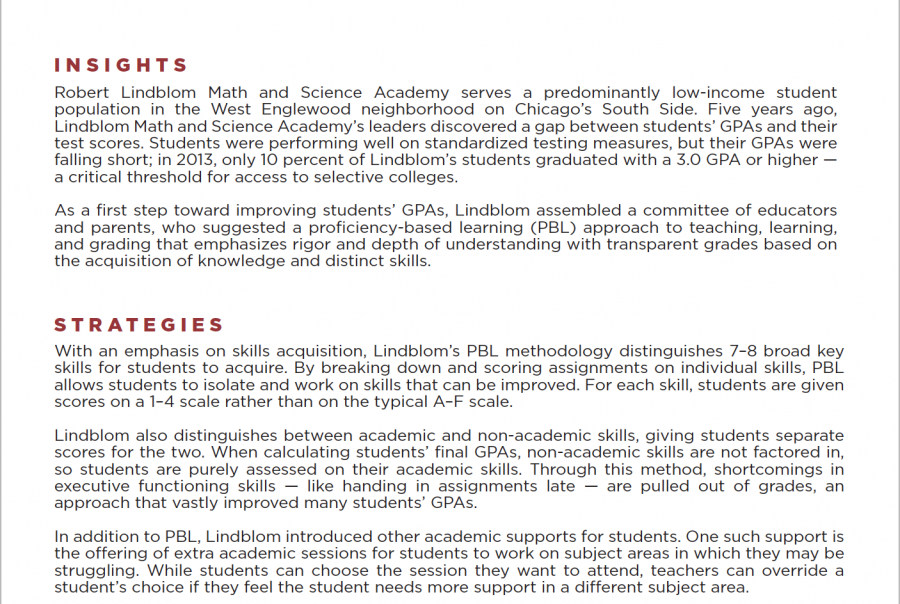Insights
Robert Lindblom Math and Science Academy serves a predominantly low-income student population in the West Englewood neighborhood on Chicago’s South Side. Five years ago, Lindblom Math and Science Academy’s leaders discovered a gap between students’ GPAs and their test scores. Students were performing well on standardized testing measures, but their GPAs were falling short; in 2013, only 10 percent of Lindblom’s students graduated with a 3.0 GPA or higher — a critical threshold for access to selective colleges.
As a first step toward improving students’ GPAs, Lindblom assembled a committee of educators and parents, who suggested a proficiency-based learning (PBL) approach to teaching, learning, and grading that emphasizes rigor and depth of understanding with transparent grades based on the acquisition of knowledge and distinct skills.
Strategies
With an emphasis on skills acquisition, Lindblom’s PBL methodology distinguishes 7–8 broad key skills for students to acquire. By breaking down and scoring assignments on individual skills, PBL allows students to isolate and work on skills that can be improved. For each skill, students are given scores on a 1–4 scale rather than on the typical A–F scale.
Lindblom also distinguishes between academic and non-academic skills, giving students separate scores for the two. When calculating students’ final GPAs, non-academic skills are not factored in, so students are purely assessed on their academic skills. Through this method, shortcomings in executive functioning skills — like handing in assignments late — are pulled out of grades, an approach that vastly improved many students’ GPAs.
In addition to PBL, Lindblom introduced other academic supports for students. One such support is the offering of extra academic sessions for students to work on subject areas in which they may be struggling. While students can choose the session they want to attend, teachers can override a student’s choice if they feel the student needs more support in a different subject area.
Results
Through the PBL approach, Lindblom has seen significant academic gains from its students. Across the board, Lindblom leaders have seen a decrease in Cs and Ds and an increase in As and Bs. The percentage of graduating students with 3.0 or higher GPAs has jumped from 10 percent in 2013 to 45 percent in 2017, and the percentage of freshmen with 3.0 or higher GPAs has gone from 21 percent in 2011 to 55 percent in 2017. This has contributed to Lindblom’s ranking number one in the Chicago Public Schools district for the volume of college scholarships its students receive for the past five years.

